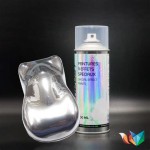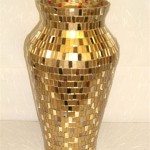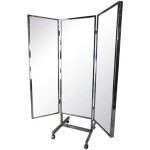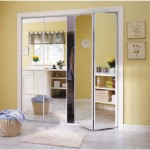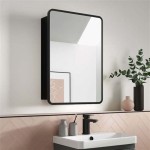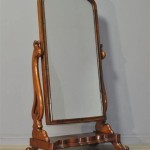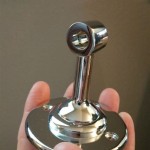Selecting the Ideal Wall Mirror for Your Bathroom
The bathroom mirror is a functional necessity and a significant design element within the space. Choosing the right wall mirror for a bathroom requires careful consideration of size, shape, style, lighting integration, and budget. A well-chosen mirror can enhance the room’s aesthetics, improve functionality, and contribute to an overall sense of spaciousness and light.
Determining the Appropriate Size and Shape
The dimensions of the bathroom mirror should be proportional to the vanity and the overall size of the bathroom. An excessively small mirror above a large vanity can appear unbalanced, while an overly large mirror in a small bathroom might overwhelm the space. A general guideline is that the mirror should be a few inches narrower than the vanity it sits above. For double vanities, consider either two separate mirrors or one large mirror spanning the width of both sinks.
Common mirror shapes include rectangular, square, round, and oval. Rectangular mirrors are versatile and often preferred for their classic look and ability to reflect a larger portion of the room. Square mirrors offer a more modern aesthetic and work well in contemporary bathrooms. Round and oval mirrors soften the sharp angles often found in bathrooms and can add a touch of elegance. The shape should complement the style of the vanity and other bathroom fixtures.
When considering height, ensure the mirror is positioned so that all users can comfortably see their reflection. Typically, the bottom edge of the mirror should be a few inches above the faucet or backsplash. For taller individuals, a taller mirror may be necessary. In shared bathrooms, consider the height of the shortest user to ensure accessibility for everyone.
Evaluating Style and Framing Options
The style of the bathroom mirror should align with the overall design aesthetic of the bathroom. Framed mirrors offer a more traditional or decorative look, while frameless mirrors provide a minimalist and contemporary feel. The choice of frame material and finish can significantly impact the mirror's appearance and should be chosen to complement the other fixtures and hardware in the bathroom.
Framed mirrors are available in a wide range of materials, including wood, metal, and synthetic materials. Wood frames can add warmth and texture to the bathroom, while metal frames offer a sleek and modern look. The finish of the frame should coordinate with the faucet, showerhead, and other hardware in the bathroom. Common finishes include chrome, brushed nickel, oil-rubbed bronze, and matte black.
Frameless mirrors are a popular choice for modern bathrooms. They offer a clean and minimalist look and can make a small bathroom feel more spacious. Frameless mirrors are also easy to clean and maintain. They can be mounted directly to the wall or attached to a backing board for added stability.
Beyond standard shapes and frames, specialty mirrors, such as arched or irregular shapes, can add a unique and personalized touch to the bathroom. These mirrors often serve as a focal point in the room and can be used to create a more visually interesting space. However, it is important to ensure that the chosen shape complements the overall design and does not clash with other elements in the bathroom.
Exploring Integrated Lighting Solutions
Proper lighting is essential in a bathroom, and the mirror often plays a crucial role in providing adequate illumination for tasks such as shaving, applying makeup, and grooming. Integrated lighting solutions in bathroom mirrors can offer a convenient and stylish way to enhance the lighting in the space.
Mirrors with integrated LED lighting are becoming increasingly popular. LED lights are energy-efficient, long-lasting, and provide a bright and even light. They can be positioned around the perimeter of the mirror or behind the glass to create a halo effect. Some LED mirrors also offer adjustable brightness and color temperature settings, allowing users to customize the lighting to their preferences.
Backlit mirrors, also known as illuminated mirrors, feature lights embedded behind the glass. This creates a soft and diffused light that is ideal for creating a relaxing and spa-like atmosphere. Backlit mirrors are often used as accent lighting in addition to the main bathroom lighting.
In addition to integrated lighting, consider the placement of other light fixtures in the bathroom. Sconces mounted on either side of the mirror can provide even and flattering light. Overhead lighting should be positioned to minimize shadows and ensure adequate illumination throughout the room. A combination of different lighting sources can create a well-lit and functional bathroom space.
Considering Additional Features and Functionality
Beyond the basic function of reflecting an image, some bathroom mirrors offer additional features that can enhance their functionality and convenience. These features may include anti-fog technology, magnification, and built-in storage.
Anti-fog mirrors are designed to prevent condensation from forming on the surface of the glass, even in humid environments. This feature eliminates the need to wipe the mirror after a shower or bath. Anti-fog mirrors typically use a heating element to keep the surface of the glass warm and prevent condensation.
Magnifying mirrors are useful for tasks such as applying makeup and grooming. They provide a close-up view of the face, making it easier to see fine details. Magnifying mirrors can be mounted on the wall or attached to the mirror itself. They are available in a range of magnifications, typically ranging from 3x to 10x.
Some bathroom mirrors also incorporate built-in storage, such as shelves or cabinets. This feature can be particularly useful in small bathrooms where storage space is limited. Mirror cabinets provide a convenient place to store toiletries and other bathroom essentials.
Evaluating Mounting Options and Installation
The method of mounting the bathroom mirror will depend on the type of mirror, the wall construction, and the desired aesthetic. Common mounting options include direct mounting, cleat mounting, and recessed mounting.
Direct mounting involves attaching the mirror directly to the wall using screws or adhesive. This is a simple and straightforward mounting method that is suitable for frameless mirrors and lightweight framed mirrors. It is important to use appropriate anchors for the wall construction to ensure the mirror is securely mounted.
Cleat mounting uses a cleat system to support the weight of the mirror. One cleat is attached to the wall, and the other cleat is attached to the back of the mirror. The two cleats interlock, providing a secure and stable mounting. Cleat mounting is often used for heavier framed mirrors.
Recessed mounting involves installing the mirror flush with the wall. This creates a clean and seamless look. Recessed mounting typically requires cutting a hole in the wall to accommodate the mirror. This mounting method is best suited for new construction or renovation projects.
Before installing the mirror, ensure that the wall is clean, dry, and level. Use a level to ensure the mirror is mounted straight. Follow the manufacturer's instructions for installation carefully. If unsure about any aspect of the installation, consult a professional.
Considering Budget and Value
The price of bathroom mirrors can vary widely depending on the size, shape, style, features, and brand. It is important to set a budget before starting the shopping process and to consider the value of different options within that budget.
Frameless mirrors are typically less expensive than framed mirrors. Mirrors with integrated lighting or other advanced features will generally cost more. The quality of the materials and construction will also affect the price.
While it may be tempting to choose the cheapest option, it is important to consider the long-term value of the mirror. A well-made mirror that is durable and stylish will provide years of service and can enhance the overall value of the bathroom. Investing in a higher-quality mirror may be a worthwhile investment in the long run.
Compare prices from different retailers and consider online options in addition to brick-and-mortar stores. Look for sales and discounts to maximize your budget. Read reviews to get an idea of the quality and durability of different mirrors.
Ultimately, the best bathroom mirror is one that meets your needs, fits your style, and stays within your budget. Careful consideration of the factors outlined above will help you choose the perfect mirror for your bathroom.

Mua Beautypeak Wall Mirror 26 X 38 Rectangular Bathroom With Metal Frame Hanging Mirrors For Living Room Bedroom Entryway Hangs Horizontal Or Vertical Black Trên Mỹ Chính Hãng 2024 Giaonhan247

Mua Wallbeyond Wood Bathroom Mirrors For Wall Mounted 24 X 36 Rustic Frame Decorative Living Room Or Bedroom Vanity Mirror Natural Color Trên Mỹ Chính Hãng 2024 Giaonhan247

Large Wall Mirror Beveled Edge Frameless Bath Bedroom Cloakroom Vanity Mirrors

14 Bathroom Mirror Wall Designs Housing News

36x24 Inches Modern Black Bathroom Mirror With Aluminum Frame Vertical Or Horizontal Hanging Decorative Wall Mirrors For Living Room Bedroom Com

Antique Mirrors In A Bathroom Adding Charm Character

Aryaansh Decorative Beveled Wall Mirror For Living Room Bathroom Bedroom Brown In Buy

Pin On Kitchen Cabinets

30 Cool Ideas To Use Big Mirrors In Your Bathroom Digsdigs

Homgarden 24x36inch Rectangle Modern Wall Mirror Black Bathroom Vanity Com

